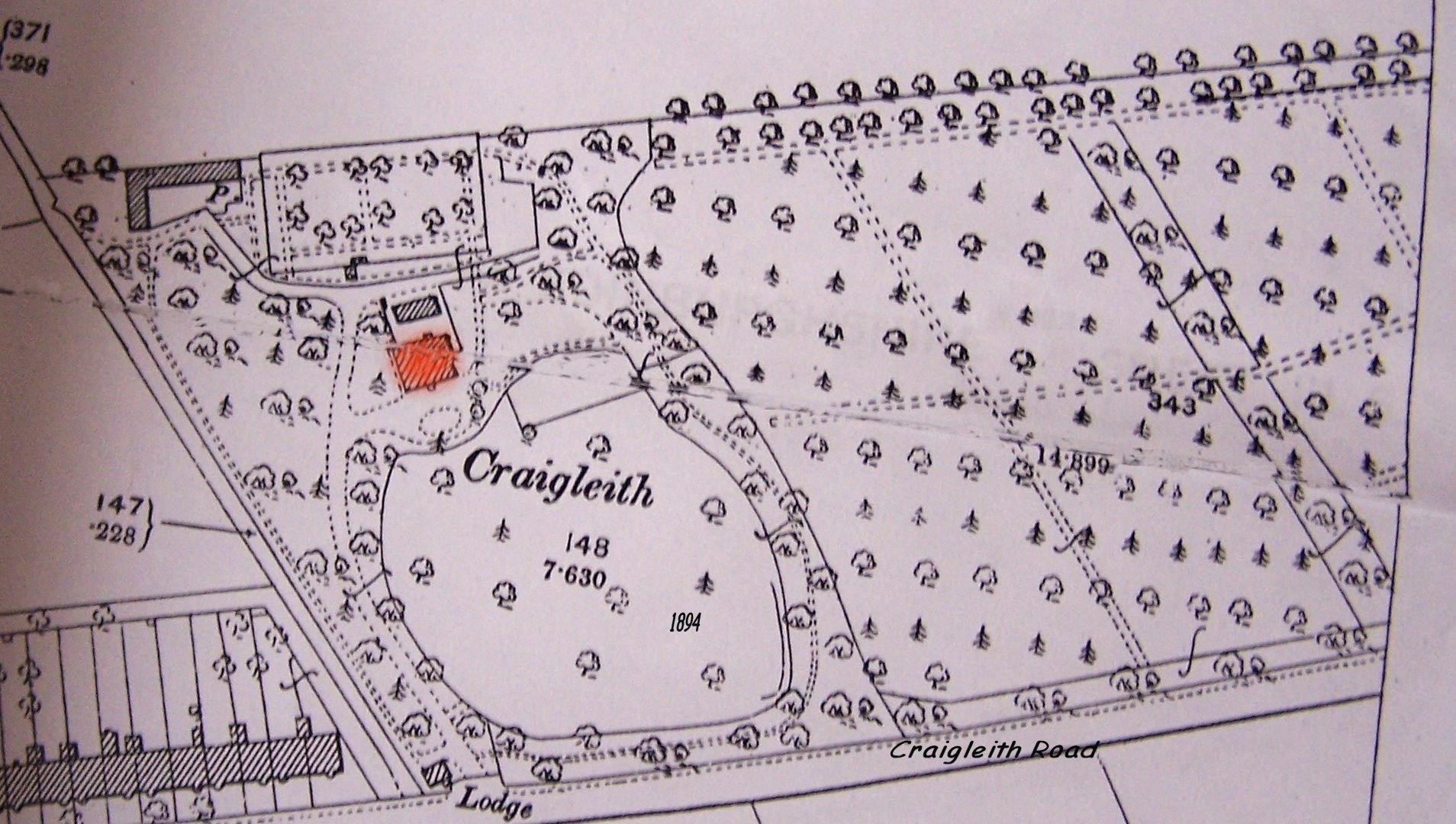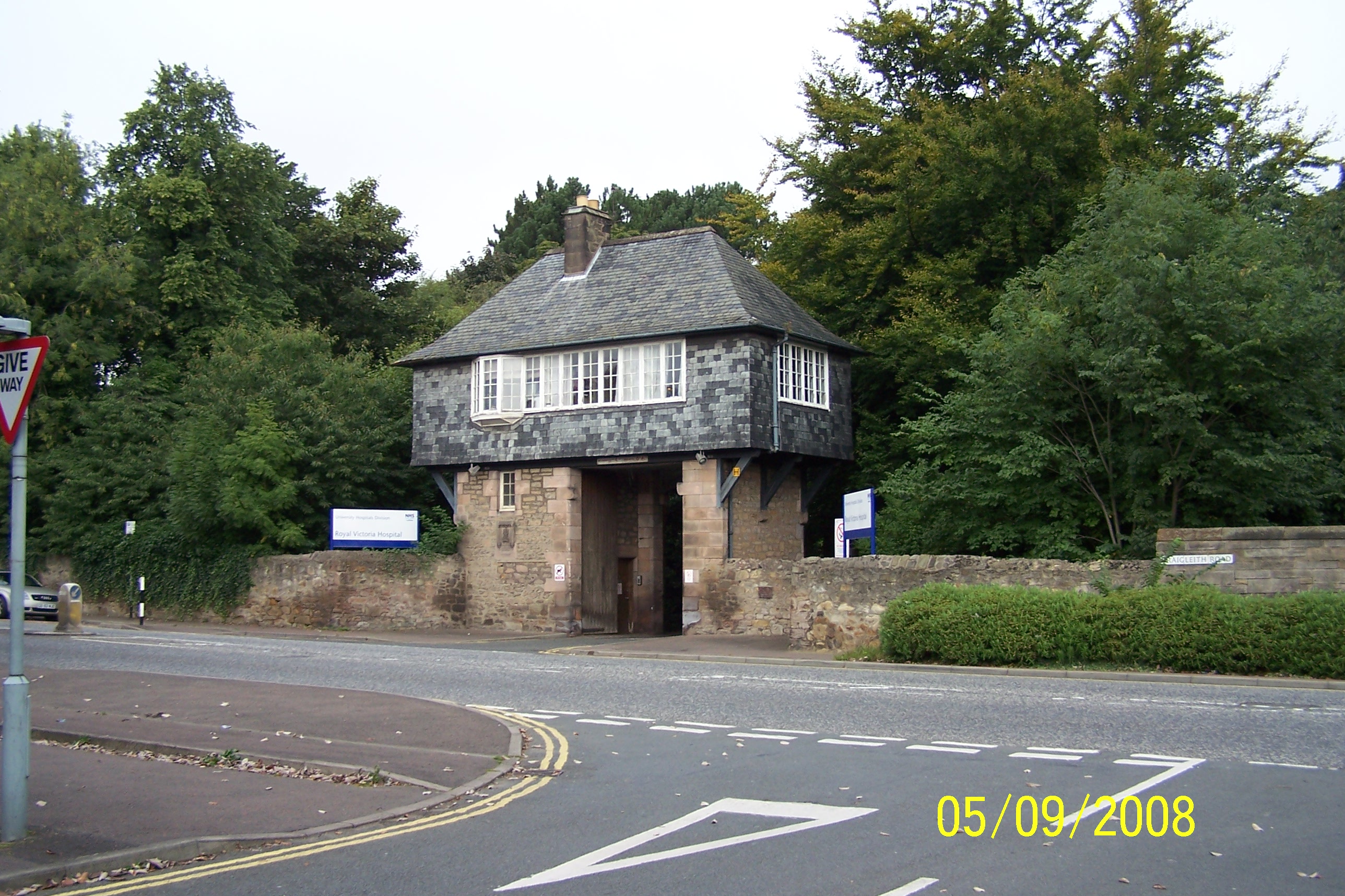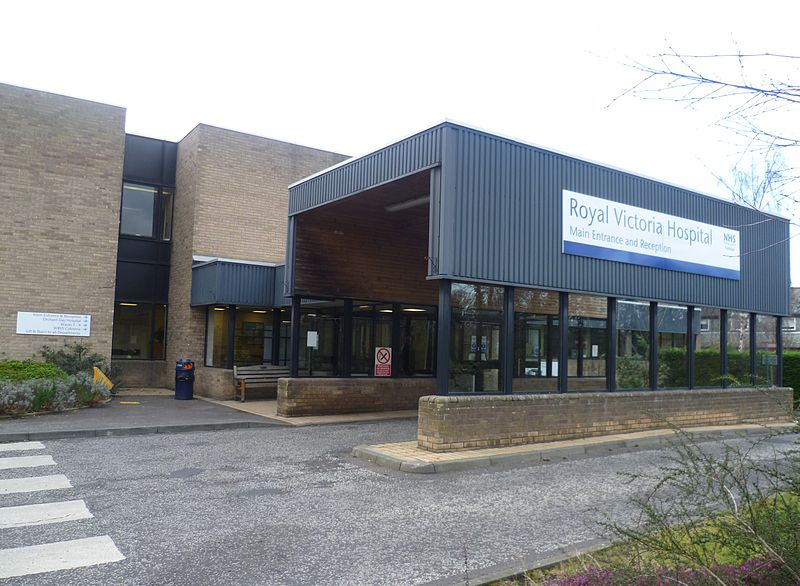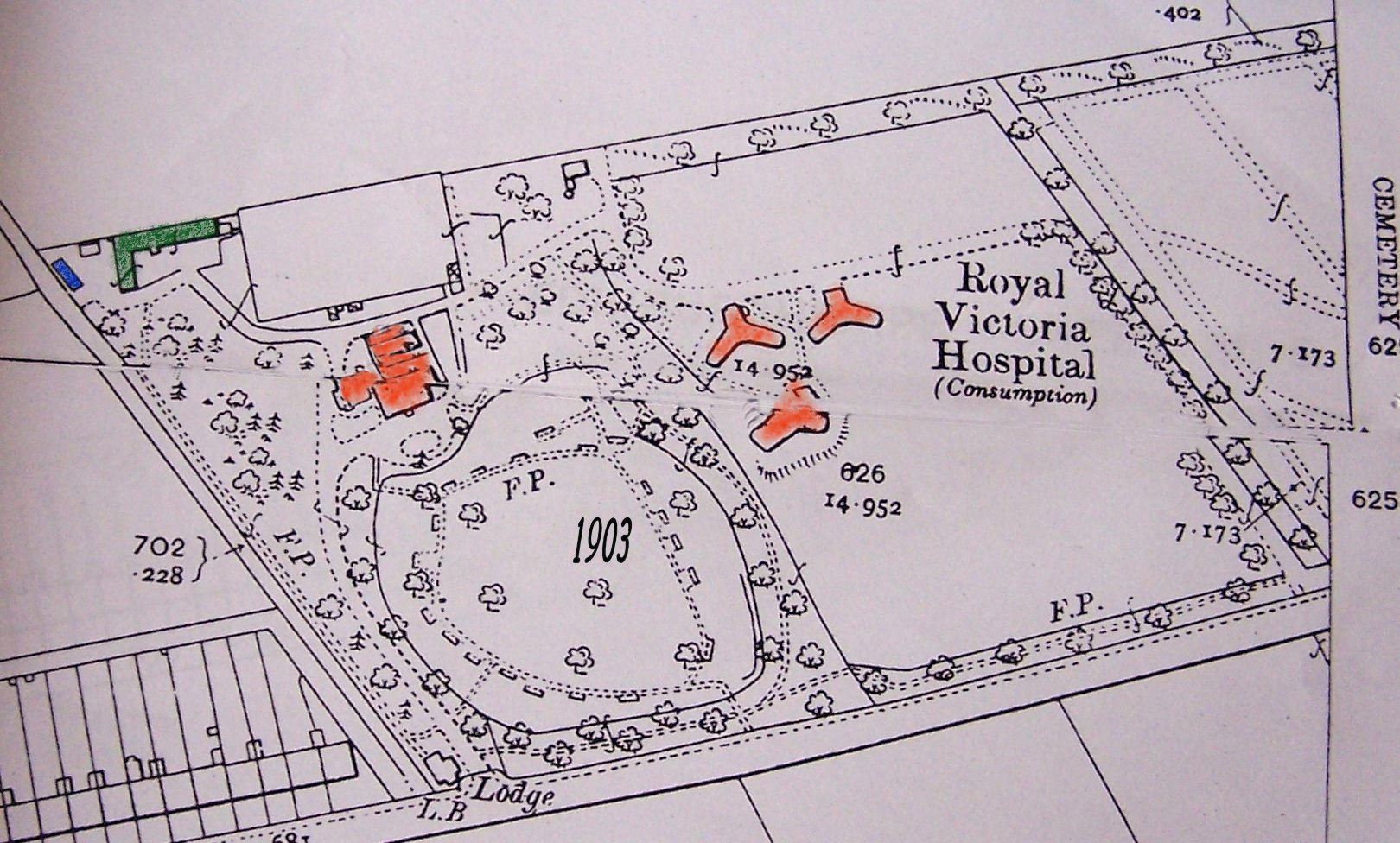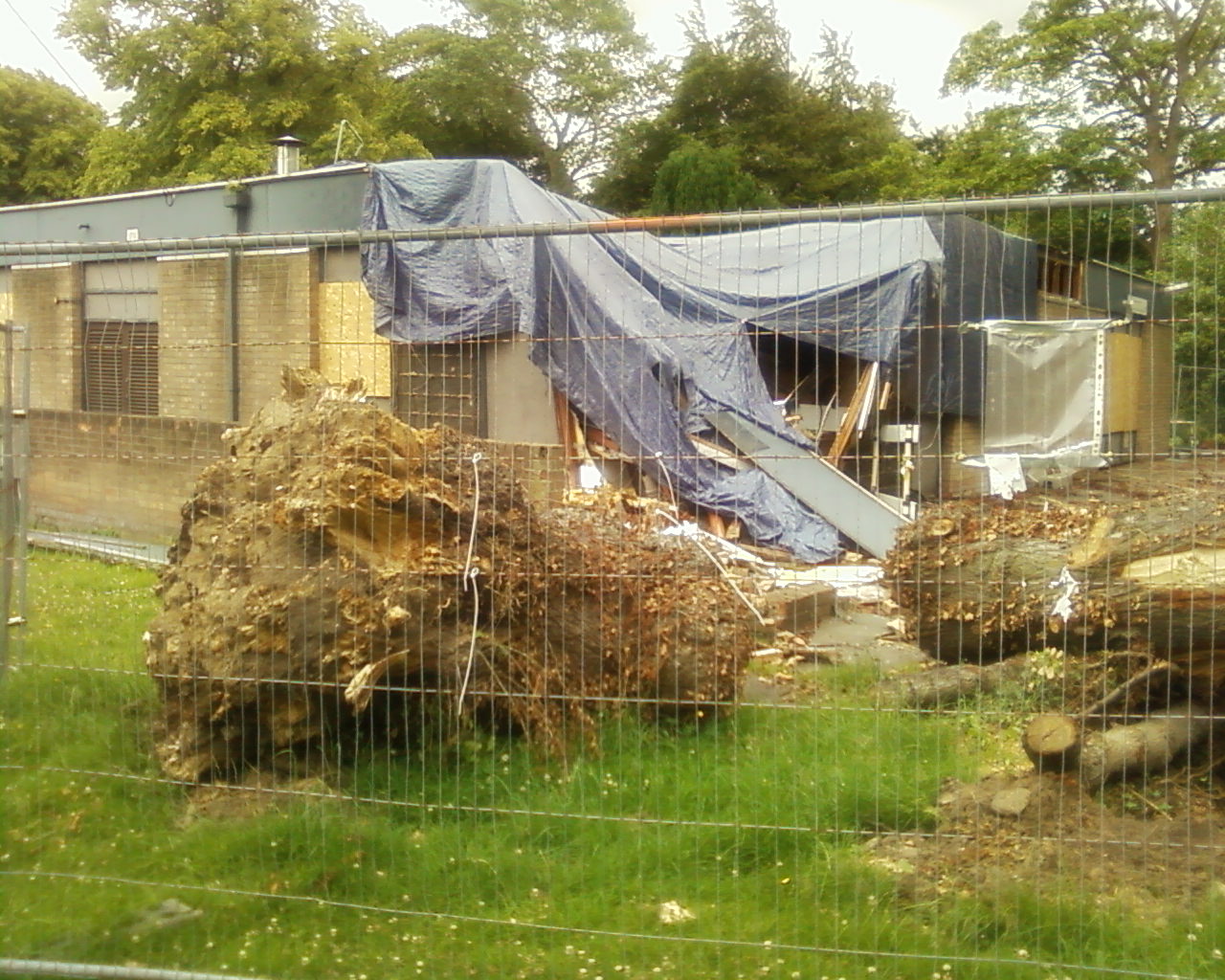History of Craigleith House and the Site of the Royal Victoria Hospital
1894 - Craigleith House,Craigleith Road, Edinburgh, a late Georgian Mansion/Villa, was leased to Sir Robert Philip and turned into the first Tuberculosis (TB) Sanatorium in Scotland containing 12 beds. It
was inaugurated on the 22nd November 1894 by Lord Stormonth-Darling, in the presence of a large assemblance of ladies and gentlemen.
In many early maps/plans,it was known just as Craigleith, then Victoria Hospital for Consumption until
Royal Patronage was given by King Edward VII in 1904 and the hospital became "The Royal Victoria Hospital for Consumption.
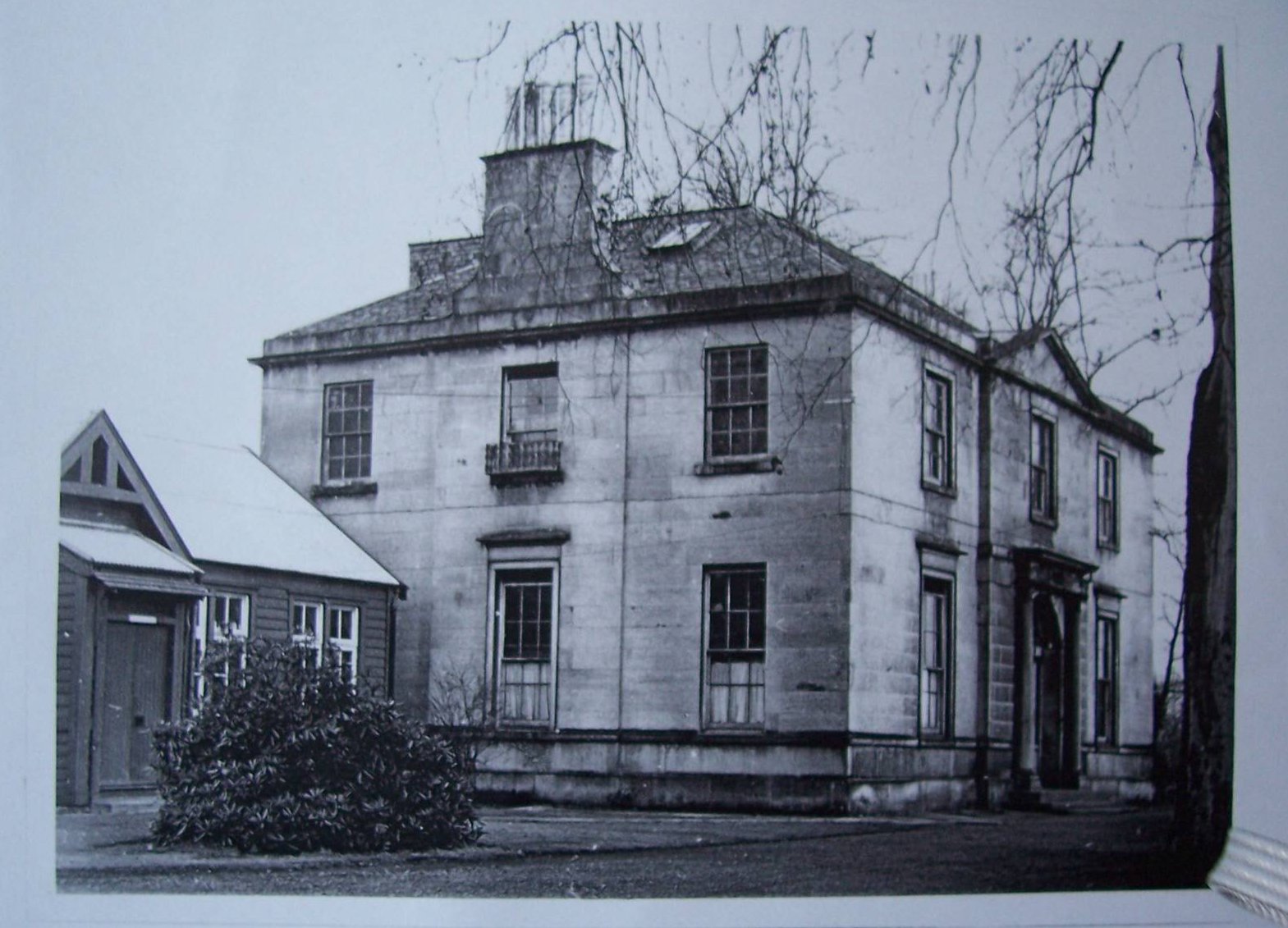
A photograph taken of Craigleith House c1900 supplied by Dr Jacques
*******************************************************************************************************
The earliest plan of 1896 shows Craigleith House on the left of the picture and its extensive grounds to the front
and on the right.
It was described as a "well built, commodious mansion-house, surrounded by seven and a half
acres of wooded park. It stands on a sunny eminence, but is well sheltered
in various directions. Pleasant walks are laid out, and there is a fine
one acre walled garden, still better protected to the North of Craigleith
House.."
There was accommodation for fifteen patients:
The ground floor
contained two male wards each with three patients, the resident physician's
apartments, laboratory,storeroom,etc.
The first floor contained three larger wards for female patients and two smaller rooms,
holding in all eight patients, the matron's room etc.
The second floor contained bedroom accommodation for day and night nurses and maids.
At the bottom left of the plan above,was the original main entrance to Craigleith House, in Craigleith Road known as the "West Lodge" and is now an exit only. On early plans there are four pillars at the entrance. The remains of one can be found just inside the grounds.
The main entrance to the present Royal Victoria Hospital site, shown below, in Craigleith Road, Edinburgh, approximately 300 yards east of the west lodge, was built and opened in 1907. This East lodge and gateway became the main entrance to the Royal Victoria Hospital. It is a unique cantilevered structure with an internal winding staircase to the porters apartments. In the sitting room of the house was a large wheel which operated the two large doors which can still be seen but are no longer in use. On the left hand side of the entrance can be seen a carved stone, below left.
Professor Emeritus J Williamson can remember that, under the carved words The ROYAL
VICTORIA HOSPITAL was carved FOR CONSUMPTION but this was removed some
time after 1954. It is possible that the word "CONSUMPTION", aka Tuberculosis, was not an ideal
title for a Geriatric Unit.
My thanks to 'The Court of the Lord Lyon'for the following
explanation of the carved stone:
Hospital Building Main Entrance
Can be seen in the photographs below. The main reception and W.R.V.S.areas were refurbished in celebration
of the Royal Victoria Hospital Centenary 1984-1994 and re-opened on 17th March 1995 by the actor, David Rintoul.
************************************************************************************************************************
In 1899 Craigleith House and its extensive grounds (60 acres) were bought for £1,000 per acre by Dr.Robert Philip. The grounds were essential in the treatment of Tuberculosis as the patients were required to get plenty of fresh air and the surrounding trees helped to "filter" the air! TB was prevalent in the early 1900s and treatment was exposure to sunlight.

The above photograph circa 1900 shows a nurse tending to a bedridden patient and one patient in a deck chair out in the fresh air.
In the background can be seen a corner of Craigleith House.
In total five small sun houses were built in the grounds between 1903 and 1907 and were named the Butterfly Wards
because of their shape which can be seen in the plan below.
In the plan above can be seen the first three Butterfly Wards opened on 15th July 1903 by the Right Honourable the Earl of Rosebery KC:KT.
Over to the top left of the plan (shown in green) is the laundry, now the maintenance workshops and the base for the Lothian Health Services van
system, and to its left, in blue, the stables.
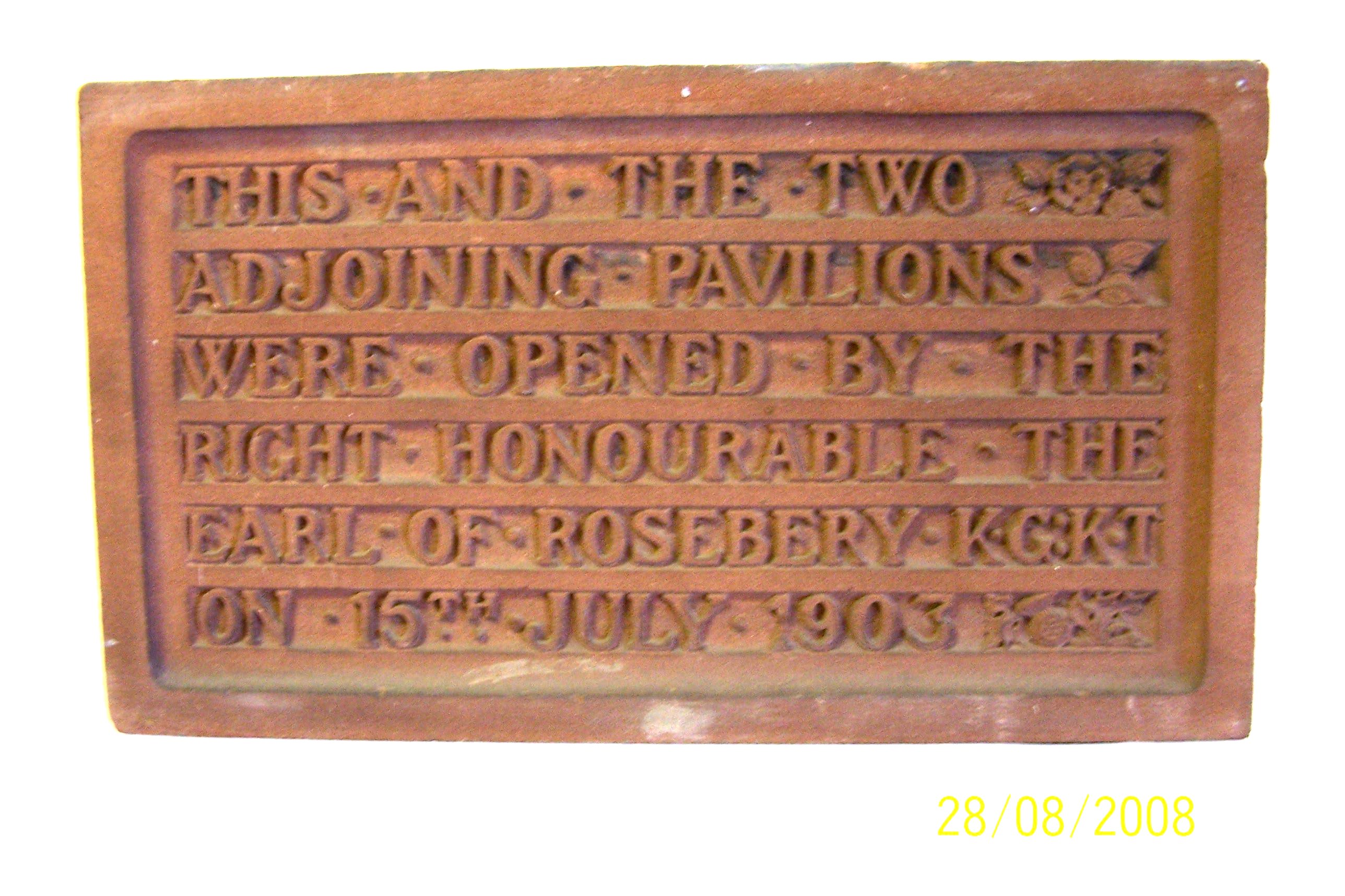
The plaque above was removed from the butterfly wards on their demolition and can be seen in the main reception area of the R.V.H
*******************************************************************************************************************************

Another two villas or Butterfly Wards and the administrative block (top right hand side of above picture) were opened
on the 26th October 1907 by the Right Honourable A.J.Balfour MP.
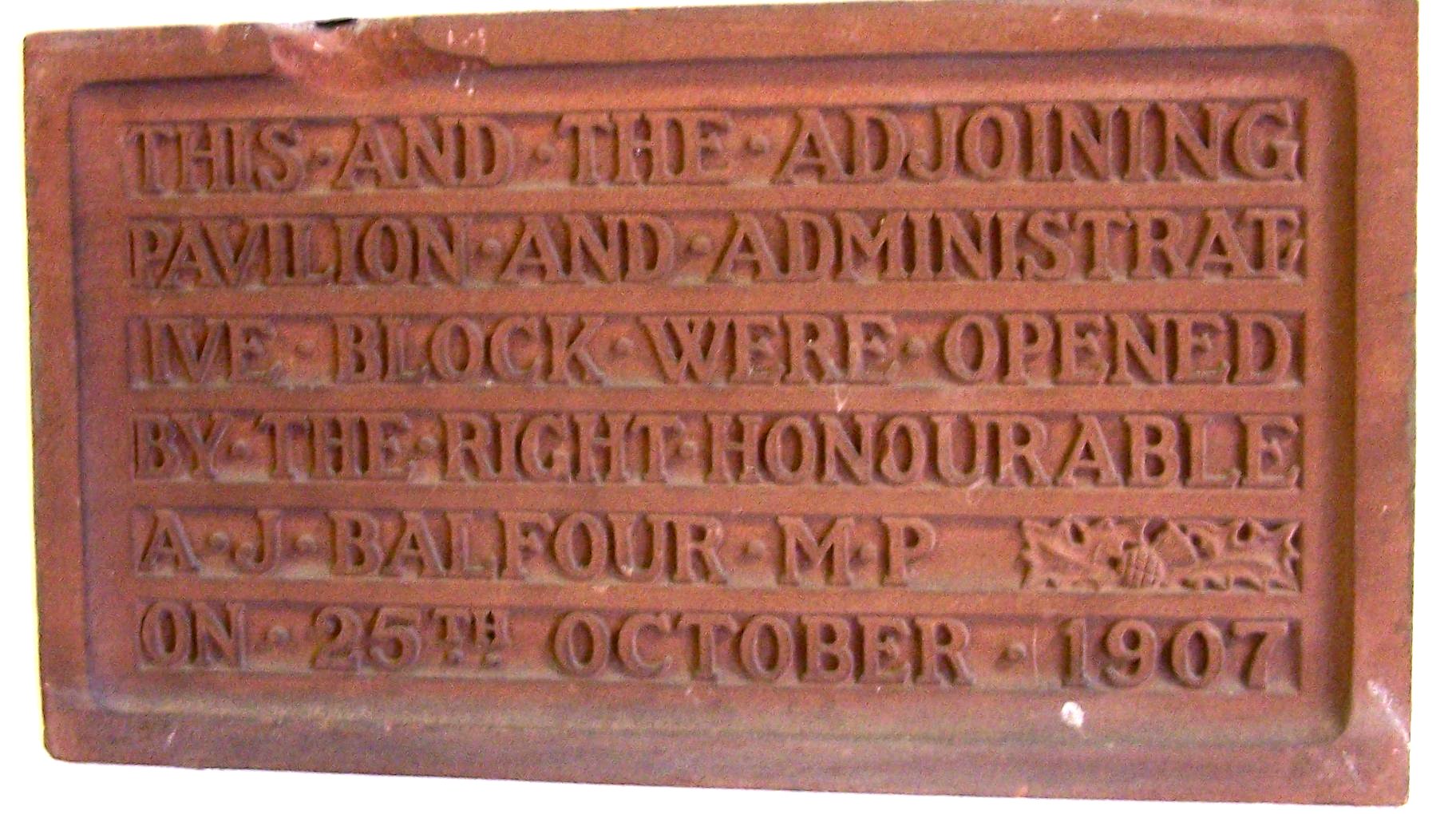
The plaque above was also removed from the butterfly wards on their demolition and is on display in the reception area.
************************************************************************************************************************
Other shelters/chalets were erected in the grounds as shown below.

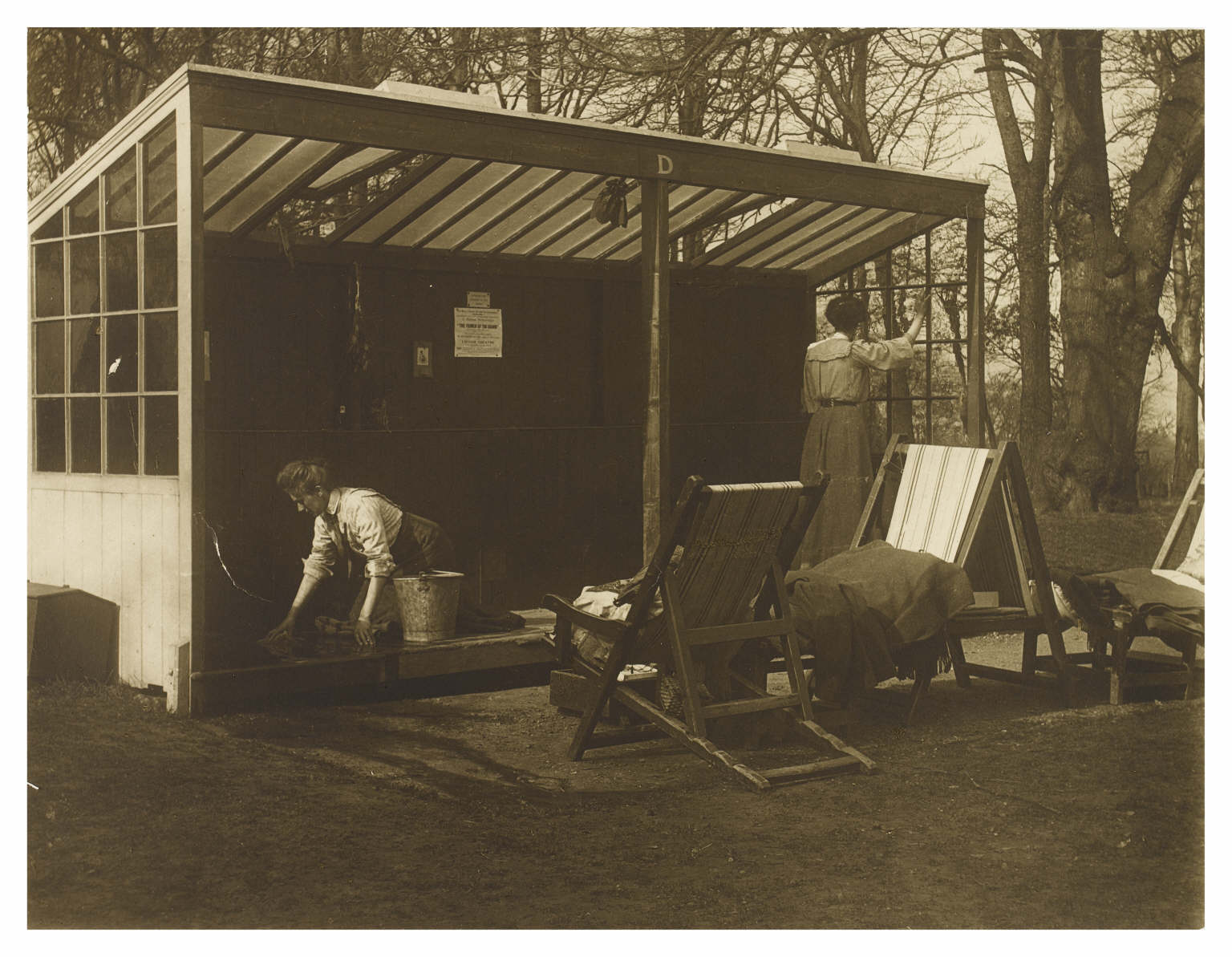
These open air shelters were for patients to use on a daily basis and were fitted on rails to
allow it to be positioned towards the sun.
Photos by kind permission of Capital Collections at www.capitalcollections.org.uk

This two bed wooden chalet was open at one end and patients slept out in them all year round.
*******************************************************************************************************
Isabel Gillard, a young women in the 1950's relates her memories of her treatment for tuberculosis which
partly involved her stay in these wooden chalets, in
"Circe's Island: A young woman's memories of Tuberculosis treatment in the 1950s" by Isabel Gillard, 2010
An unbound press book, ISBN 978-0-9558360-5-3
*****************************************************************************************************
Administrative Block (B-Listed Building)
The Aministrative block with bell tower was opened in 1907.
It included a dining hall/ chapel complete with pipe organ and organ loft.With the introduction of central
heating the organ was removed to an unknown destination.
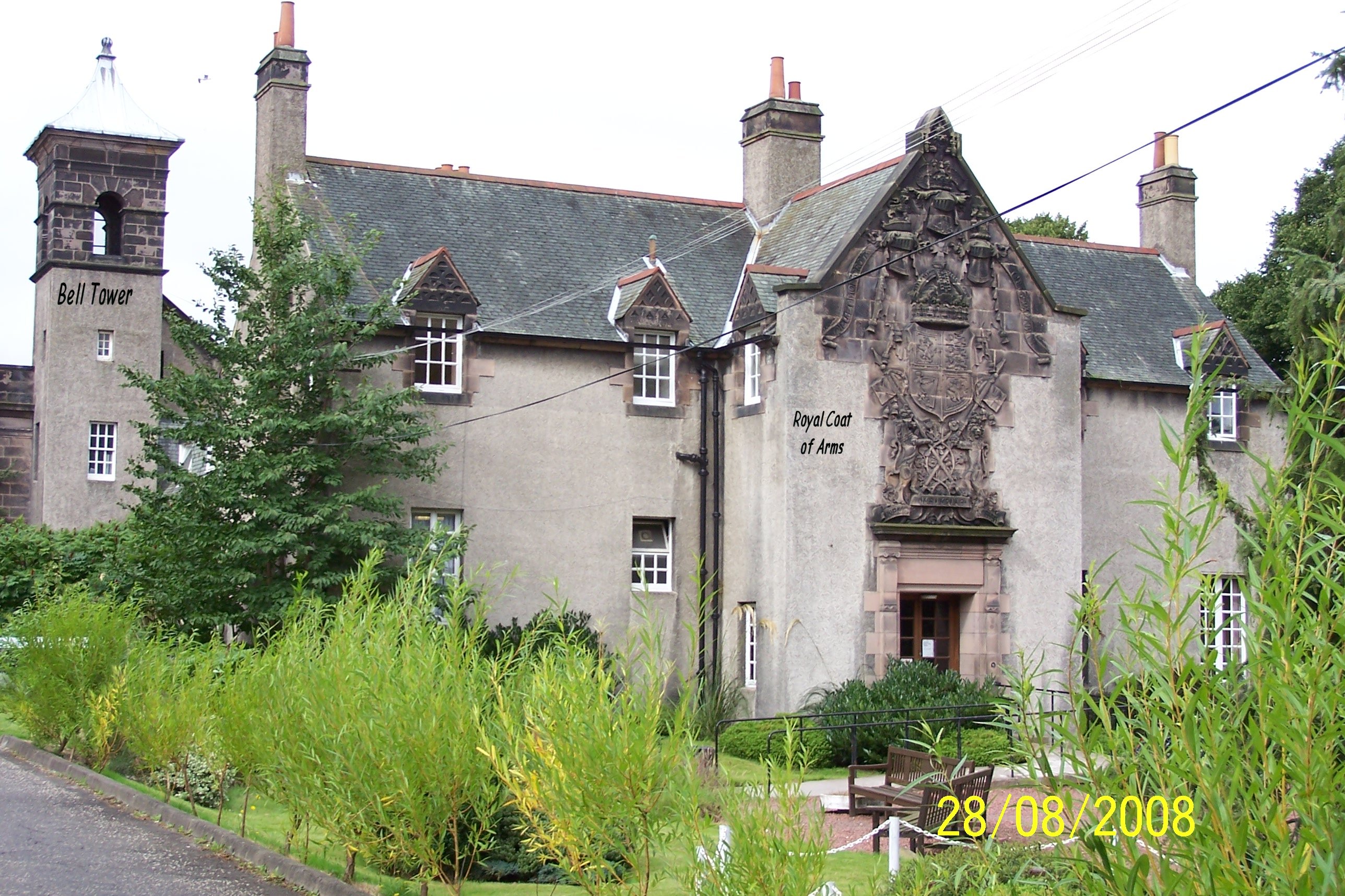
Administrative block's mains entrance with bell tower on the left. The bell was never installed as it would have upset the patients.
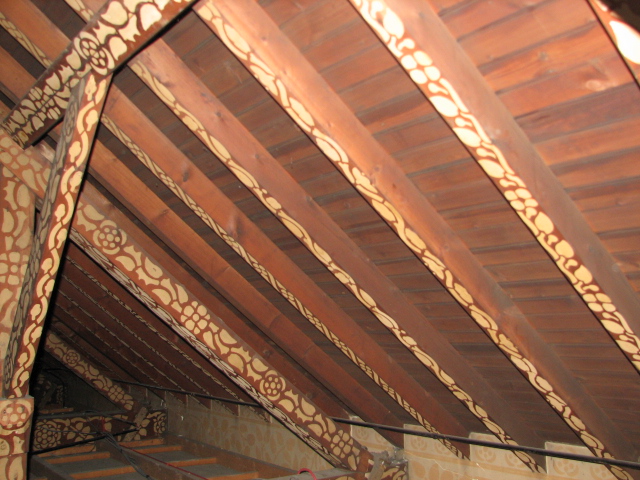
The organ loft with acid etched beams.
Thanks to Charles Dickson(Staff RVH)for the photograph.
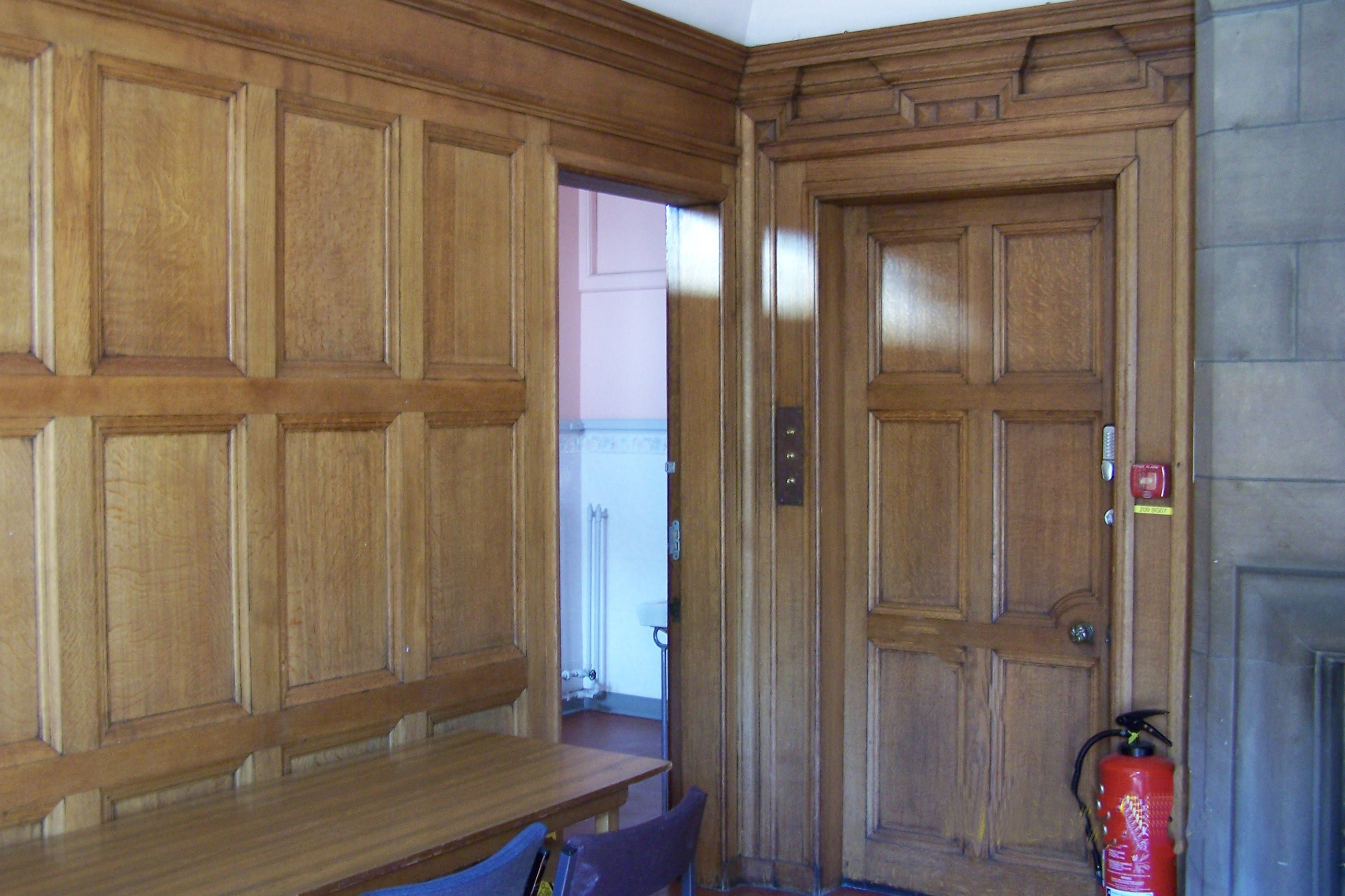
The hallway of the Admin Block showing the wood wall panelling which also covers the walls of the board room.

Above the front entrance is a very large ornate Royal Coat of Arms seen above and its contents is explained below.
On the coat of arms to the left is inscribed 'Dieu Et Mon Droit'('God and My Right'). To the right is inscribed 'Quis
Separabit' ('Who shall separate (us)') and along the bottom is inscribed 'Nemo Me Impune Lacessit'('No One Harms Me With Impunity').
My thanks to 'The Court of the Lord Lyon' for the following
explanation of the Coat of Arms:
Shield:
Quarterly, 1st and 4th, a lion rampant
within a double tressure flory counterflory, 2nd, three lions
passant guardant, 3rd, an Harp.
Above the shield is set an Imperial Crown, above which are placed
three Helms suitable to His Majesty's Sovereign jurisdiction, each
with Mantling.
That in chief, His Majesty's Royal Crest of Scotland,
a lion sejeant affrontée imperially crowned, grasping in his dexter paw
a naked sword and in his sinister paw a sceptre, both erected, and in an
Escrol, this Motto "IN DEFENS".
That on the dexter, His Majesty's Royal Crest of England, on an Imperial
crown, a lion guardant imperially crowned, and in an Escrol this Motto "DIEU
ET MON DROIT".
That on the sinister His Majesty's Royal Crest of
Ireland on a wreath a tower triple-towered, from the portal a hart
springing, and in an Escrol this Motto "QUIS SEPARABIT".
Below
the shield are His Majesty's Royal plant badges, Thistles for Scotland, Roses for England and
Shamrocks for Ireland, with His Supporters, dexter, a Unicorn crowned with an Imperial crown and gorged of an open crown to
which is affixed a chain passing betwixt the forelegs and reflexed over
his back, and sinister, a lion rampant guardant imperially crowned,
the unicorn embracing and bearing up a banner charged of a Saltire or
Cross of St. Andrew, the lion embracing and bearing up likewise a banner
charged of a Cross of St. George.
*******************************************************************************************************************************
The East Gatelodge
At the same time as the final two butterfly wards and administration block were opened the unusual east entrance gateway and lodge was completed (1907)and is now the main entrance into the R.V.H complex off Craigleith Road The administrative block and east entrance gate are both B-listed buildings.
************************************************************************************************************

A water colour painting of the Administrative block by Richard Jaques hangs in its boardroom.
***********************************************************************************************************
Successful Treatment Led to a Change of Use
Treatment of TB, in its early stages, in the early days was directed by Dr Robert
Philip and consisted of increasing the patients immunological system by
initially increasing the patients contact with fresh air, sunlight and mild exercise.
At the same time it was necessary to stop the spread of the disease as
well as finding other methods of defeating the disease by surgical
procedures, medication,immunisation and improving the living conditions particularly in regard to
cleanliness and the method for disposing of contaminated body fluids. By
1955, the direct attack on tuberculosis was being successfully mounted using all these methods and, there was less demand
for TB beds but there was an increased demand for the long term nursing care of the elderly.
For this reason, in 1959, the butterfly wards were converted for the continuing care of elderly patients who were
unable to return home.
*****************************************************************************************************************
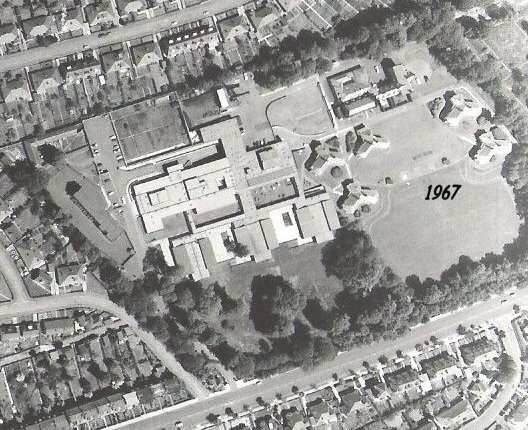
The original Craigleith House, after the Butterfly wards were built, was used as a nurses home but became in
much need of repair and it was decided to demolish it in 1960.It has been said that staff could see through the walls as the building was full of
dry rot.
The converted Butterfly Wards were not absolutely suitable for elderly patients or staff and modern ward facilities were built in 1967on the site of the original Craigleith House consisting of three 30 bed wards but still leaving the converted butterfly wards in use as seen in the above photograph.
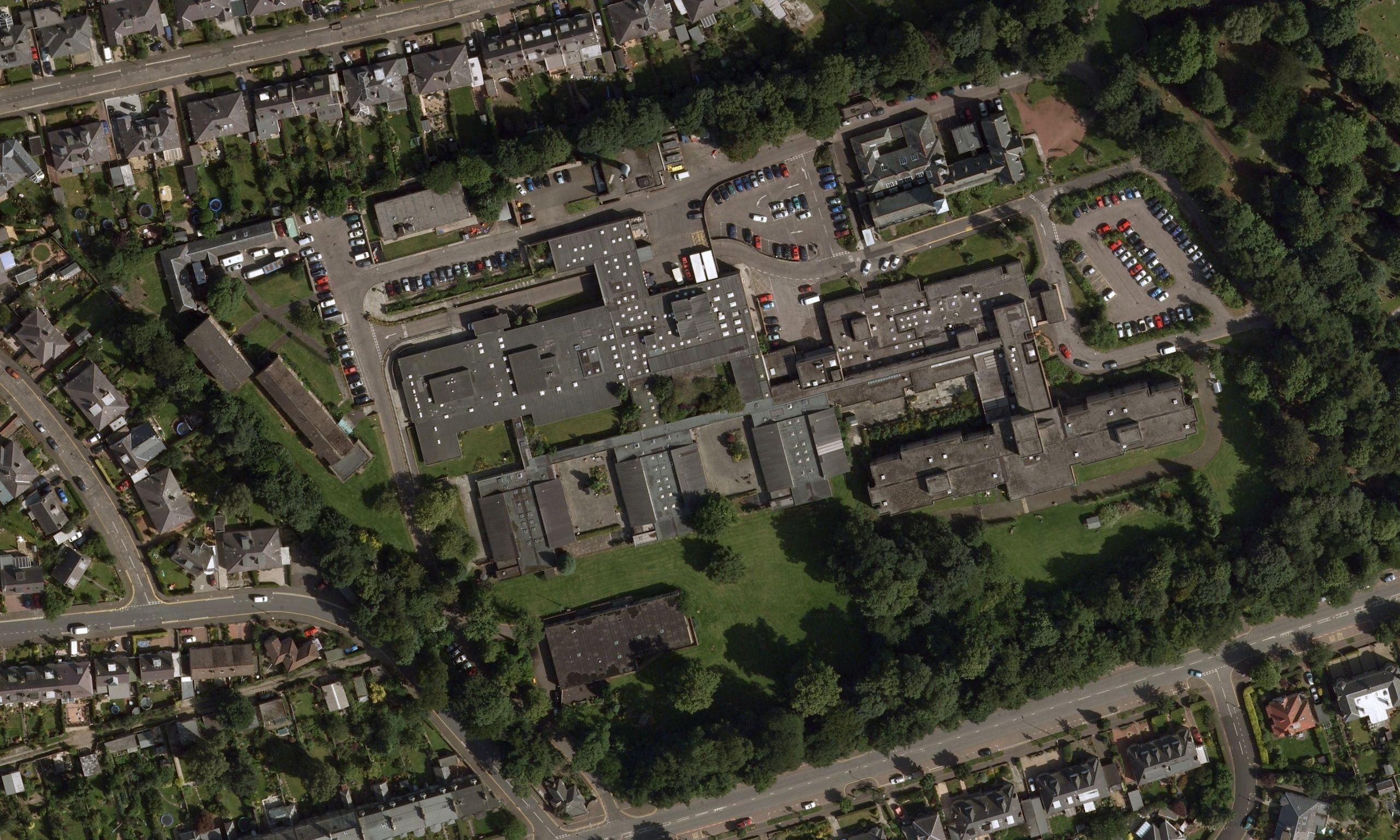
The butterfly wards were eventually demolished around 1981 to make way for the third and final Phase of
the R.V.H as seen in the above photograph.
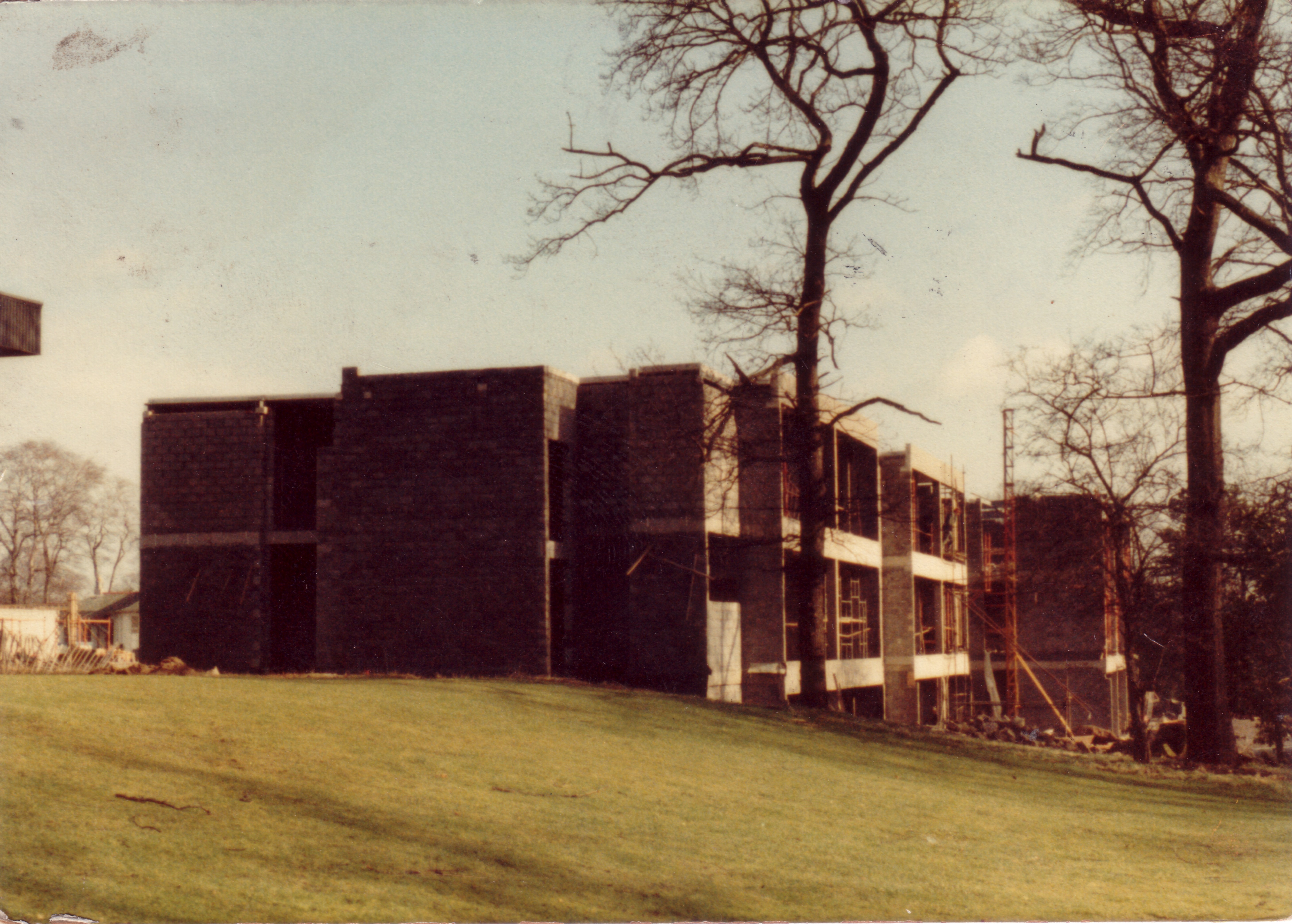
This consisted of a 6 x 30 bed complex(above) and was opened on 20th November 1986 by Chairman of the Lothian Health Board,
Mr. R.Bruce Weatherstone, T.D.,C.A.on the site of the original butterfly wards.
********************************************************************************************************************
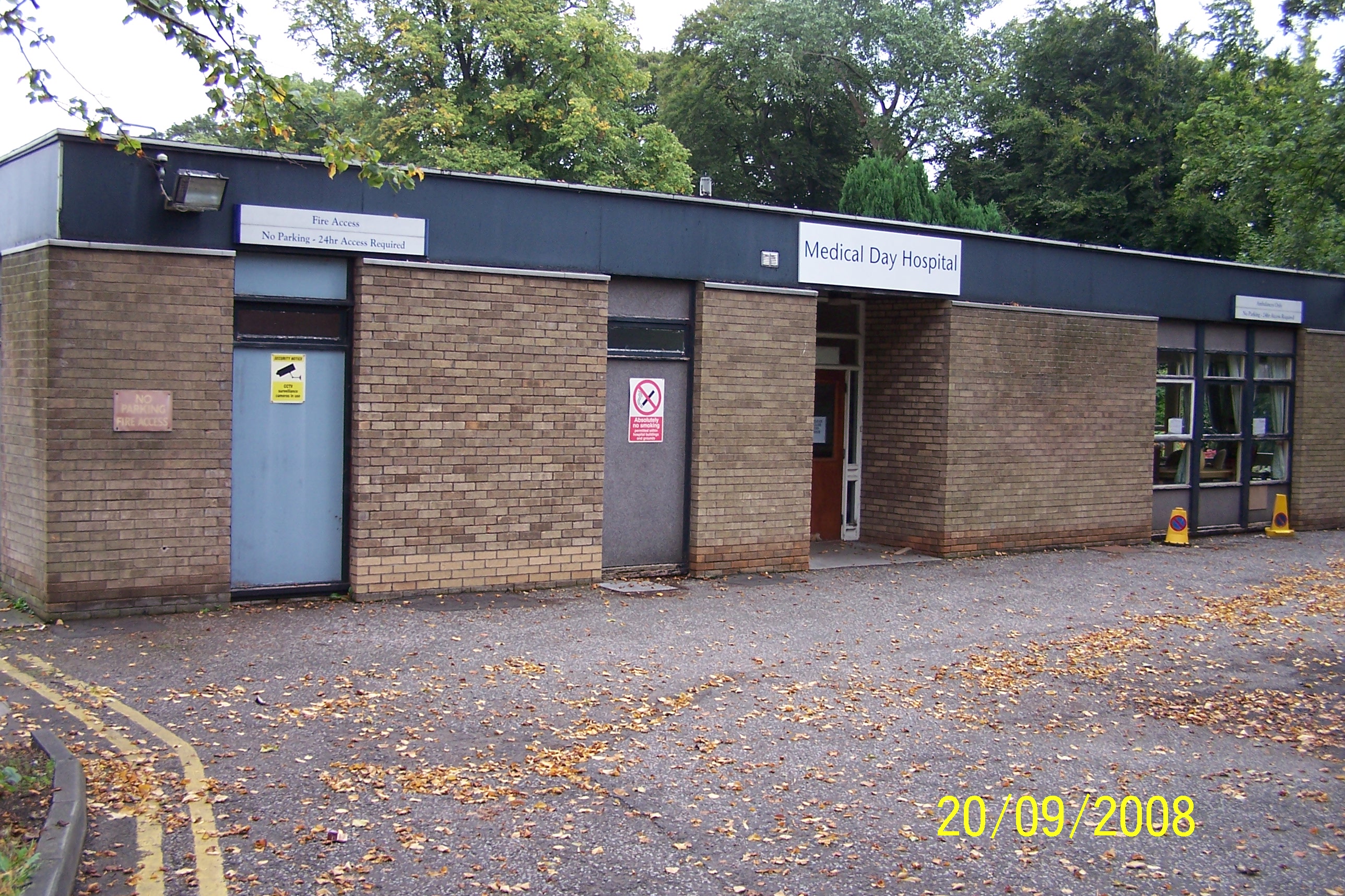
Finally a purpose built 30 bedded long stay care ward was built (circa 1978 ), with the help of a donation from Robert Alexander.
To commemorate the origin of the hospital this Day Centre was named CRAIGLEITH HOUSE.
The Day Centre is situated just inside the grounds at the West Gate.
********************************************************************************************************************
Unfortunately in the storms of winter 2011/12 a tree was uprooted and fell across the front of Craigleith House.The building was in such a bad state it had had to be demolished in April 2012
*********************************************************************************************************************************
November 2012
The Royal Victoria Hospital in Craigleith Road was temporarily mothballed and re-opened after a major refurbishment of the wards.
News from the Media Centre NHS Lothian, dated 5/2/2014, stated:
"Two wards were reopened in the Royal Victoria Hospital in November 2012 to provide additional
capacity. Since then a further two wards have been upgraded and another two wards are currently being refurbished.
This will provide around 120 beds in total with a mix of single rooms and four bedded bays"
To see the refurbished wards, click the link below.
Link to view refurbished wards
***********************************************************************************************************************************
Future of the Royal Victoria Hospital Site
NHS Lothian has engaged planning consultants to determine/investigate the uses for the future of the site taking City of Edinburgh Council (CEC)
planning as well as local residents and Community Councils into consultation. There has been a lot of interest from residents in
retaining the large amount of mature trees as well as the two B listed buildings namely the Cantilever East Gate and the
Admin Block.
Click on the link below to view Royal Victoria Hospital, Edinburgh planning Proposals:
Link to planning proposals"
